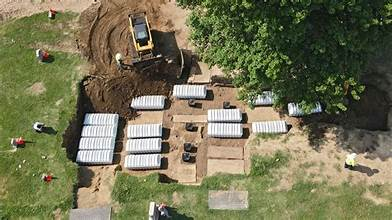
Table of Contents
Three Exhumed Tulsa Race Massacre Victims Found with Gunshot Wounds: Uncovering the Past
The Tulsa Race Massacre of 1921 remains one of the darkest chapters in American history. For nearly a century, the violent events that devastated the prosperous Black community of Greenwood in Tulsa, Oklahoma, were shrouded in silence and neglect. Recent developments have brought new revelations to light, as forensic investigations into the massacre have uncovered gunshot wounds in the remains of three victims exhumed from a mass grave. This discovery not only provides chilling evidence of the brutality inflicted during the massacre but also highlights ongoing efforts to seek justice and closure for the victims and their descendants.
1. The Tulsa Race Massacre: A Brief Overview
**1. *Historical Context:*
- Date and Events: On May 31 and June 1, 1921, a white mob attacked the Greenwood District of Tulsa, known as “Black Wall Street” for its prosperous Black-owned businesses and affluent residents. The attack resulted in the destruction of over 1,000 homes and businesses, leaving an estimated 10,000 people homeless. Reports suggest that up to 300 Black residents were killed during the massacre.
- Root Causes: The violence was sparked by allegations that a Black teenager, Dick Rowland, had assaulted a white woman, Sarah Page. The case, fueled by racial tensions and sensationalist media coverage, led to a white supremacist mob targeting the Black community.
**2. *Aftermath and Cover-Up:*
- Initial Response: Following the massacre, the survivors faced numerous barriers, including a lack of support from authorities, destruction of records, and widespread denial of the violence. Insurance claims were often denied, leaving many victims without financial restitution.
- Historical Neglect: For decades, the massacre was largely omitted from mainstream history and education. Efforts to revisit and acknowledge the events have intensified in recent years, spurred by growing advocacy for racial justice and reparations.
2. Recent Forensic Discoveries
**1. *Exhumation Efforts:*
- Mass Graves: In 2021, the 100th anniversary of the massacre, officials and researchers began efforts to locate and identify mass graves believed to contain the remains of massacre victims. Ground-penetrating radar and other investigative methods were used to identify potential sites.
- Identification of Remains: The exhumation process, led by forensic teams and historians, aimed to provide a clearer understanding of the scale of violence and the identities of the victims. The remains of several individuals were recovered from a designated mass grave site.
**2. *Forensic Analysis:*
- Gunshot Wounds: Preliminary forensic analysis of the exhumed remains revealed gunshot wounds, confirming that some of the victims were shot during the massacre. This finding provides crucial evidence of the violent nature of the attacks and the targeted killing of individuals.
- Additional Findings: The forensic team also discovered other signs of trauma, such as blunt force injuries and signs of fire damage, indicating the extreme violence and destruction that occurred.
3. Implications and Reactions
**1. *Historical Significance:*
- Confirmation of Violence: The discovery of gunshot wounds in the remains offers definitive proof of the violent methods used during the massacre. It underscores the need to confront the full reality of the violence inflicted on the Black community in 1921.
- Historical Accuracy: The findings contribute to a more accurate and comprehensive understanding of the events of the massacre. They also help to validate the experiences of survivors and their descendants, who have long sought recognition and justice.
**2. *Legal and Social Implications:*
- Calls for Justice: The revelation has renewed calls for accountability and justice for the victims and their families. Advocacy groups and descendants of the massacre victims are pushing for reparations, legal recognition, and official apologies.
- Ongoing Investigations: The forensic discoveries may lead to further investigations into additional mass graves and historical records. Efforts to uncover more evidence and provide closure for the victims and their families are ongoing.
**3. *Community and Cultural Impact:*
- Restoration of Memory: The findings are a significant step in restoring the memory and legacy of the Greenwood community. They contribute to a broader movement to address historical injustices and promote racial reconciliation.
4. Challenges and Considerations
**1. *Identifying Victims:*
- Challenges in Identification: Identifying the remains and matching them to historical records presents significant challenges. Many victims were buried in unmarked graves, and existing records are incomplete or lost.
- Family Connections: Efforts to connect the remains to descendants or specific families are complicated by the passage of time and the lack of detailed records. However, genealogical research and DNA testing are being employed to assist in identification.
**2. *Ethical Considerations:*
- Respect for Remains: Handling and studying human remains require careful ethical considerations. The forensic team and researchers must ensure that the process respects the dignity of the deceased and the wishes of their descendants.
- Historical Sensitivity: The excavation and analysis of the remains must be conducted with sensitivity to the historical trauma experienced by the affected community. Public discussions and portrayals of the findings should be handled with care to avoid further harm or exploitation.
5. Looking Forward
**1. *Continued Advocacy:*
- Support for Survivors and Descendants: Advocacy groups are focusing on supporting the survivors and descendants of the massacre. This includes efforts to secure reparations, provide financial assistance, and promote public acknowledgment of the tragedy.
- Legislative Efforts: Legislation at local, state, and federal levels may be pursued to address the needs of the affected community and ensure that the massacre is properly remembered and addressed.
**2. *Historical Legacy:*
- Educational Initiatives: The findings will likely spur educational initiatives aimed at teaching about the Tulsa Race Massacre and its significance. Museums, educational programs, and public memorials may play a role in preserving the history and promoting awareness.
- Community Healing: The discovery of gunshot wounds and other evidence may contribute to a broader process of healing and reconciliation for the Black community in Tulsa and beyond. Acknowledging and addressing historical injustices is a crucial step in fostering understanding and addressing the legacy of racial violence.







